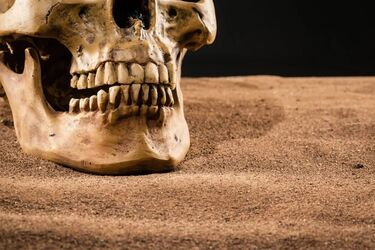Eggs and bull hooves: archaeologists have learned how prehistoric people brushed their teeth

Oral hygiene has come a long way from chewing sticks to modern toothbrushes. For example, Neanderthals were already brushing their teeth 130,000 years ago.
The earliest evidence of dental care is found on 130,000-year-old Neanderthal teeth. Scientists believe that they used pieces of bones or tough grass to remove food, writes IFLScience.
The first dental patient
14,000 years ago, a man from Italy suffered from caries. The rotten tooth was removed using a sharp stone tool.
Also read: Archaeologists found evidence of piercing on the remains of prehistoric people (photo)
The first toothpaste
5000 years ago, the ancient Egyptians invented the first toothpaste. It consisted of ash, eggshell, myrrh and pumice stone.
Chewing sticks
The oldest toothbrushes are chewing sticks used in Egypt and Babylon 3,500 years ago. They were made from the branches of certain trees that had antimicrobial properties.
Toothbrushes made of boar's hair
The first toothbrushes with bristles appeared in China 700-1000 years ago. Their bristles were made of boar's hair, and their handles were made of bamboo or bones.
Modern toothbrushes
Modern toothbrushes with nylon bristles appeared in the 20th century.
Interesting Facts:
- The ancient Persians added burned snail and oyster shells, as well as herbs and honey to their toothpaste.
- The Romans used charcoal and tree bark to reduce bad breath.
- Chewing sticks made of miswak wood are still used in many countries in Asia and the Middle East.
Earlier, scientists found out that ancient people ate giant snails 170,000 years ago.
If you want to receive the latest news about the war and events in Ukraine, subscribe to our Telegram channel!
